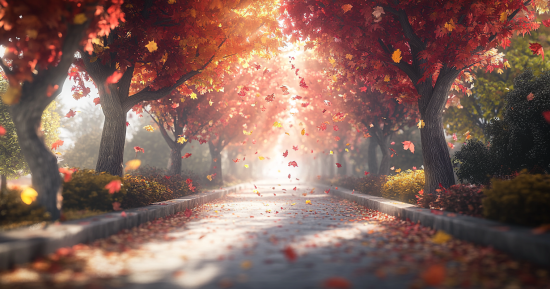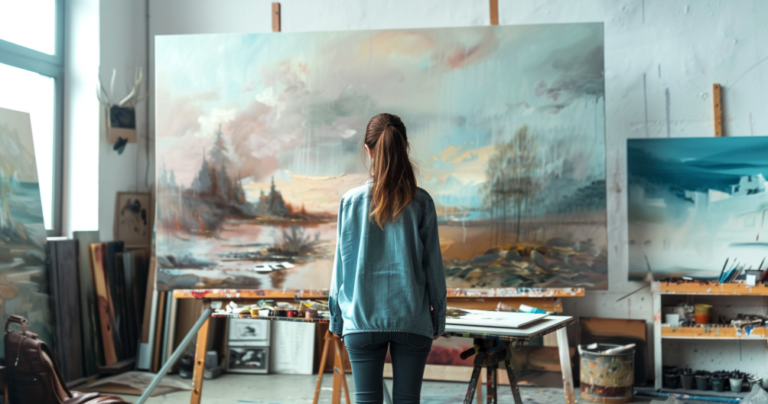As autumn arrives, the world around you transforms with vibrant colors and cozy textures. This season offers a perfect opportunity to embrace the fall painting aesthetic, which captures the warmth and beauty of autumnal landscapes. From golden leaves to rustic pumpkins, these artistic elements evoke nostalgia and serenity, inviting you to savor the moments of this enchanting time.
Fall Painting Aesthetic
You can explore a warm palette of reds, oranges, and browns that reflect the richness of fall. Incorporating natural motifs and inviting textures allows you to create art that not only resonates with the season but also enhances the ambiance of your space. Your paintings can connect you to nature while providing a lovely backdrop for fall gatherings, turning your creativity into cherished keepsakes.
Exploring the Warm Palette

The Significance of Color in Fall
Color is a powerful tool in painting, especially during the fall season. Warm colors like reds, oranges, and yellows create a feeling of coziness and invite viewers to experience autumn’s warmth. These shades mirror the change in foliage, making your artwork relatable.
When you use warm colors, you also stimulate emotions. For instance, reds evoke excitement, while yellows bring joy and optimism. This emotional connection enhances the viewer’s experience and reinforces the seasonal theme.
To add depth, you can experiment with variations, such as using darker shades like burgundy or mustard. Balancing warm colors with cooler tones can highlight their vibrancy, creating dynamic compositions that draw in the audience.
Iconic Fall Colors in Painting
Several iconic fall colors stand out in paintings, each evoking the season’s spirit. Here are some essential shades to consider for your palette:
- Cadmium Orange: A bright, vivid hue that reflects the changing leaves.
- Burnt Sienna: This deep, earthy brown adds warmth and richness to your artwork.
- Cadmium Yellow: A vibrant yellow that brightens your composition and reflects sunlight on crisp days.
- Crimson Red: This bold shade provides dramatic contrast and captures the essence of autumn hues.
Incorporating these colors enhances the fall aesthetic and allows you to express the season’s beauty effectively. Experimenting with combinations can yield stunning results that resonate with your audience and celebrate the magic of fall.
Incorporating Fall Motifs and Textures

Capture the Essence of Autumn
To truly capture autumn in your paintings, focus on the iconic elements of the season. Start with vibrant colors like deep reds, burnt oranges, and golden yellows.
Incorporate motifs such as:
- Pumpkins: Use shapes and shadows to create dimension.
- Fallen Leaves: Experiment with various leaf shapes in different colors.
- Bare Trees: Show their skeletal beauty against vibrant skies.
Each motif adds a distinct characteristic of fall, allowing viewers to feel the season’s spirit. Step-by-step tutorials can help you create these elements, keeping the process enjoyable and engaging.
Creating Depth with Textures
Textures play a vital role in achieving a realistic and captivating fall painting. You can create depth by using thick paints and various brush techniques.
Consider the following approaches:
- Palette Knife: Use it to create rough textures that resemble bark or foliage.
- Layering: Apply multiple layers of paint for a rich, dynamic effect.
- Mixed Media: Introduce pastels or ink to add contrast and interest.
Each technique contributes to the overall depth, making your artwork more immersive. Don’t hesitate to experiment; sometimes, the best results come from unexpected techniques.
Frequently Asked Questions – Fall Painting Aesthetic
What are some simple ideas for painting an autumnal scene?
Consider painting a grove of colorful trees with their leaves in red, orange, and yellow shades. A peaceful pathway lined with fallen leaves or a cozy cabin surrounded by nature can also capture the essence of fall.
How can I create an easy fall painting on a canvas?
Start by choosing a simple composition. Use a broad brush to apply a gradient sky, then layer in your trees using short strokes to mimic leaves. Don’t forget to add ground colors to represent fallen leaves or grass.
Could you suggest some beginner-friendly steps to paint an autumn-inspired piece?
Begin with a sketch of your chosen scene. Next, apply your base colors generously. Gradually add details like shadows and highlights to bring your painting to life, and finish with texture using a smaller brush.






